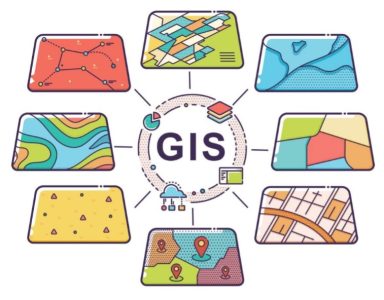Widgetized Section
Go to Admin » Appearance » Widgets » and move Gabfire Widget: Social into that MastheadOverlay zone
Analyzing Urban Society’s Equitable, Socio-Spatial, and Functional Demographic Dynamics Through GIS (Geographic Information Systems)
The views expressed are those of the author and do not necessarily reflect the views of ASPA as an organization.
By Carvis D. Durr
January 17, 2025

Equity in Urban Societies
In urban societies, the planning process must embrace inclusivity, fostering vibrant, equitable communities. Social equity, a vital yet often overlooked element, is instrumental in shaping cities influenced by their inherent diversity. This diversity enriches critical areas like transportation, housing, public spaces and environmental sustainability, powered by a varied workforce. An equitable city aspires to provide every resident access to quality housing, education, healthcare and employment opportunities, nurturing inclusive and thriving communities. Here, social equity embodies the fair distribution of resources, opportunities and services that span the urban landscape, aiming to alleviate disparities related to socioeconomic status, race, ethnicity and more. Historically, urban planning has too often sidelined specific communities, resulting in significant injustices and inequalities. Practices like redlining and restrictive zoning have disproportionately affected low-income and minority neighborhoods, entrenching cycles of poverty. Recognizing this reality is crucial for progress, prompting efforts to dismantle existing inequalities and foster more inclusive urban environments. Collective governance is pivotal in forging partnerships among government, private sectors and civil society to enhance social equity. Such collaborations harness diverse resources and expertise, paving the way for innovative solutions to urban challenges. Harnessing geospatial technologies, like Geographic Information Systems (GIS), urban planners can analyze spatial data, identify disparities in resource distribution and enable informed decision-making that champions equitable development.
Socio-Spatial Dynamics
The socio-spatial perspective emphasizes the complex interconnections among economic, political and cultural relationships within urban environments. This viewpoint highlights how technological advancements, political dynamics and cultural contexts influence the evolution of urban society. Successful economic activities depend on a skilled workforce that benefits from access to essential community services, such as high-quality education and comprehensive healthcare. These services are vital for cultivating talent and ensuring the well-being of residents, ultimately supporting the local economy’s long-term sustainability. Furthermore, the interplay between community and family life and specific economic demands significantly shapes the vitality of businesses and neighborhoods. Economic objectives that align with community needs and values foster an environment supportive of family wellness and business success. This synergy drives economic growth, enhances social cohesion and elevates urban residents’ overall quality of life.
Additionally, GIS mapping equips organizations to make informed decisions by providing accurate and up-to-date information. It reveals patterns and relationships that traditional methods may overlook. Moreover, GIS mapping improves safety by offering insights into potential hazards and risks, enabling organizations to identify vulnerable areas and take adequate measures to mitigate those risks.
Functional Differentiation
Understanding functional differentiation in urban settings requires recognizing that a city’s unique economic activities shape its roles and functions. Rather than being an inherent trait, functional differentiation arises from local conditions and economic systems. In monopoly capitalism, such differentiation does not stem merely from the city’s characteristics. However, it is profoundly influenced by various institutions—regulatory bodies, financial organizations and labor markets—and by social actors, including businesses, community groups and entrepreneurs. These entities operate within urban environments intrinsically connected to national corporations, which is crucial in generating a significant portion of national wealth. The diverse, functionally differentiated activities within urban areas form a “system of cities” where cities do not exist in isolation. They operate within a larger context, influencing and being influenced by their interconnected economic, social and institutional dynamics. This interdependence enriches each city’s economic landscape and role within the national framework. GIS mapping empowers organizations to collaborate brilliantly by creating a platform for sharing data and visualizations. It inspires teams to unite, fostering the exchange of insights and ideas.
Demographic Changes
The demographic landscape of urban society is continually evolving, influenced by various social and economic factors. Major cities aim to define unique roles within the national context while actively attracting a growing number of white-collar professionals. This influx is fueled by the increasing demands of modern industries for a skilled workforce capable of addressing the complexities of today’s economic challenges. In summary, GIS mapping is an indispensable tool for organizations of all sizes. It allows them to make well-informed decisions, plan more accurately, optimize resource allocation and enhance communication. Furthermore, GIS mapping can improve operational efficiency, customer service and safety. Given these advantages, it has become a vital resource for organizations seeking a competitive advantage in today’s data-driven landscape.
Author: Carvis C. Durr, a Ph. D Candidate and College Instructor at the University of Central Florida’s School of Sociology and Statistics. Carvis holds a Bachelor’s degree in Public Administration and two Master’s degrees in Business Administration and Leadership/Human Resource Development. Carvis is a member of the Scholar Strategy Network. Follow Carvis on X @Iamcarvis or check out his professional profile on LinkedIn.


Follow Us!